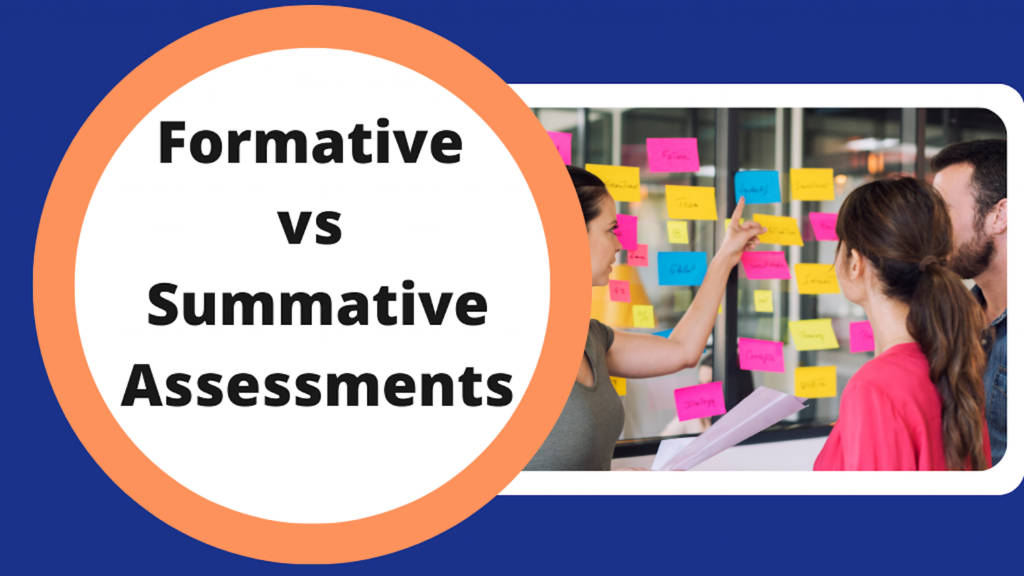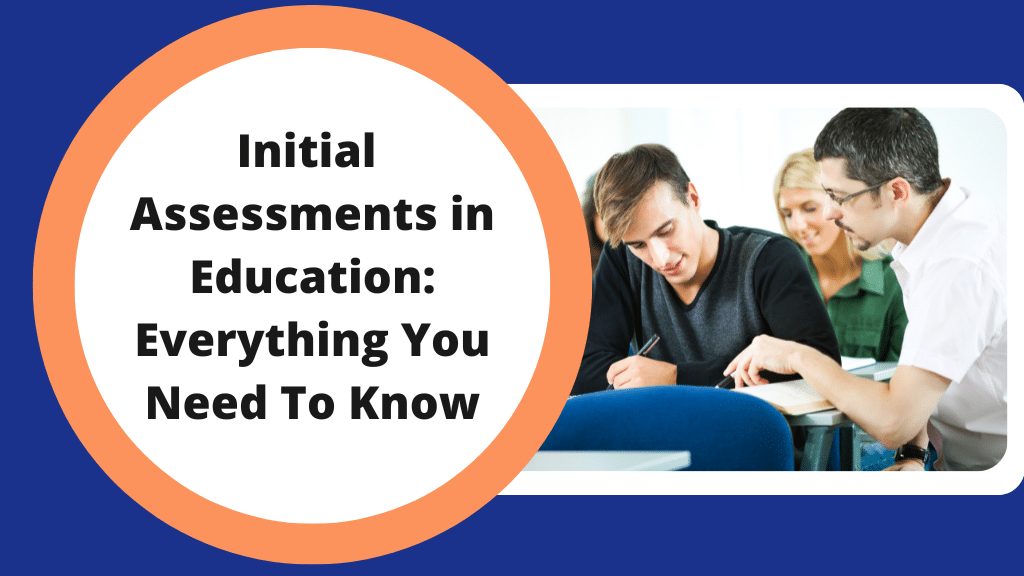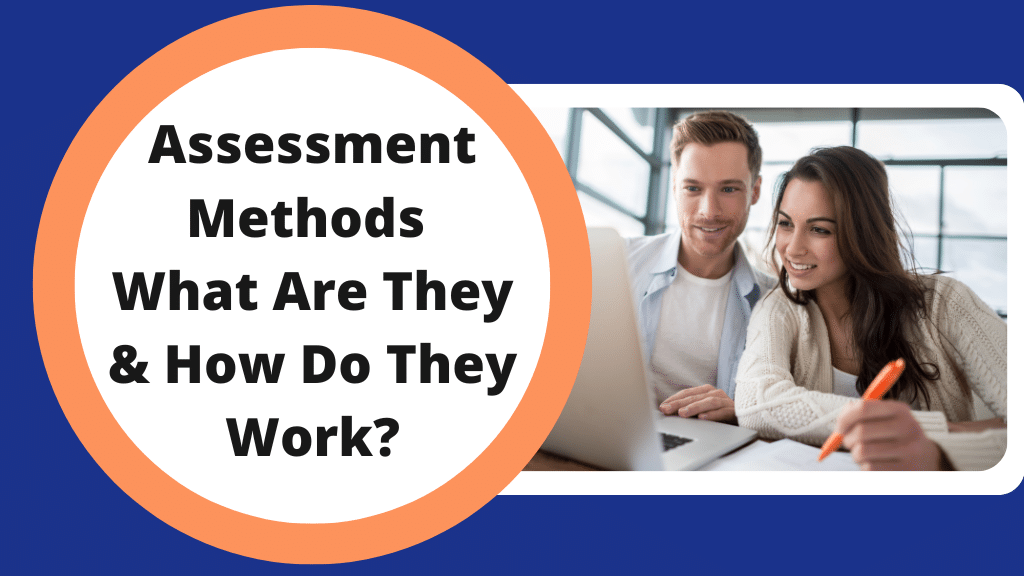August 14, 2024
Formative vs Summative Assessments: Definitions & Examples

Whether you are a full-time or part-time assessor, a trainer, a teacher or somebody who just occasionally helps out with training and induction, you’ll come across different types of assessments. You’ll realise that not all assessments are created equal, and there are different uses for assessments and different expectations for you, the person carrying them out. What’s more, as in many other areas of life, there is no shortage of jargon to get to grips with.
What are ‘Types of Assessment’?
To understand what is meant by ‘types of assessment’, it’s helpful to consider why and when assessments take place in a learner’s journey. This can be confusing because people also refer to ‘assessment methods‘, which sounds similar but isn’t. By ‘methods’ people really mean the way in which assessments are carried out, i.e. how they are done rather than when or why.
The two main types of assessments to be aware of are formative assessments and summative assessments. Each serves a distinct purpose and uses different approaches to help you and your learners in different ways. It’s important to understand the differences between them, so you can underpin your training with suitable assessments that give you useful data.
What is Formative Assessment?
Formative assessment is often described as an assessment ‘for learning’, ‘ongoing assessment’, or holistic assessment. It allows teachers to receive feedback in real-time as learners are still progressing through their training.
Formative assessment strategies allow the teacher or trainer to quickly identify anyone who is struggling to keep up. Of course, in an ideal world, learners would grasp everything straight away, but in reality, everyone learns differently. It’s no good getting to the end of the course and finding out that some of the learners don’t understand the learning objectives.
With formative assessments, teachers or trainers can use these insights to tailor their support for their student’s needs, plug knowledge gaps and improve the learning experience. They might do this by revisiting topics again, planning future lessons to include different teaching methods, or even giving some one-on-one support to learners who need it.
Examples of Formative Assessment
High-quality formative assessment techniques involve regular feedback and interactions between the instructor and the learner. They are typically informal observations of the learner’s performance individually or through class activities to gauge their knowledge and skills from their training. Formative assessments are also used to make adjustments to teaching strategies and learning activities, if necessary, to better support the learner.
These formative evaluations can take place in a variety of ways, including:
Quizzes
Short quizzes are a fun way to create a feedback mechanism for both the teacher and the student to gauge their understanding. They tend not to be used for grading.
Discussions & Observations
Direct conversations provide insights into the students’ comprehension and areas of interest. Whereas with observations, teachers can subtly or overtly observe learners carrying out the skills they have learnt.
Self-assessment
With self-assessment, learners might score their work out of ten based on how easy they found the concept to grasp, or in a group discussion, the teacher might ask for a simple ‘thumbs-up/thumbs-down’ to show if they feel ready to move on to the next stage. This helps learners take ownership of their learning, and teachers identify any changes needed to their strategies or curriculum.
What is Summative Assessment?
Summative assessment is a more traditional way to evaluate student learning. It is typically conducted at the end of a unit or a course against set standards. Summative assessments are often high stakes, as the results can be used to determine a student’s overall grade. Depending on the student’s level, this can be hugely stressful, as their future study or career trajectory can hinge on the outcome of this assessment.
Examples of Summative Assessment
Summative assessments are typically administered at the end of a module or course to evaluate educational outcomes and grades, making them highly structured and more formal than formative assessments.
Summative assessments can take place as:
Final Exams
These are comprehensive tests intended to cover all the material presented throughout the course to highlight the learner’s knowledge and skills from their training.
Final Projects
Rather than projects to support learning objectives, final projects require the integration of skills and knowledge acquired over the course and are used to determine the learner’s suitability for qualifying at the end of their training.
Formative Vs Summative Assessments: At A Glance
| Feature | Formative Assessment | Summative Assessment |
| Purpose | Improve learning and instruction | Evaluate competence |
| Timing | Throughout the course | At the end of a course |
| Feedback | Immediate, to aid learning | After assessment, often not directly aimed at improving the learning process |
| Examples | In-class quizzes, interactive discussions | Final exams or projects |
Integrating Both Formative and Summative Assessments into Training
Both formative and summative assessments are important in the context of education and training. Effective training programs should blend both to determine if learning objectives have been met suitably and productively. In a training setting, a formative approach might include regular feedback sessions and the instructor planning accordingly to cater to individual pacing and learning needs. Summative assessments could then occur at the end of the training, with a final assessment that can prove the students have achieved the desired learning outcomes.
When the two are used hand-in-hand, the summative result should be an accumulation of all of the formative strengths and weaknesses that have been identified along the way.
Understanding how and when to use each type of assessment can significantly improve the effectiveness of a course. By planning an assessment strategy, educators can ensure that they not only measure educational outcomes more effectively but also enhance the learning process and achieve better educational outcomes for their learners.
Become a Skilled Trainer or Assessor with Carlton Training
At Carlton Training, we are committed to helping you become a skilled trainer or assessor through our courses, including the Level 3 Award in Education and Training and Level 3 Certificate in Assessing Vocational Achievement (CAVA), as well as other course package deals. You can book your course online today or contact us for personalised advice on the best qualification for your needs.
Next ›‹ Previous
Back to Blog








